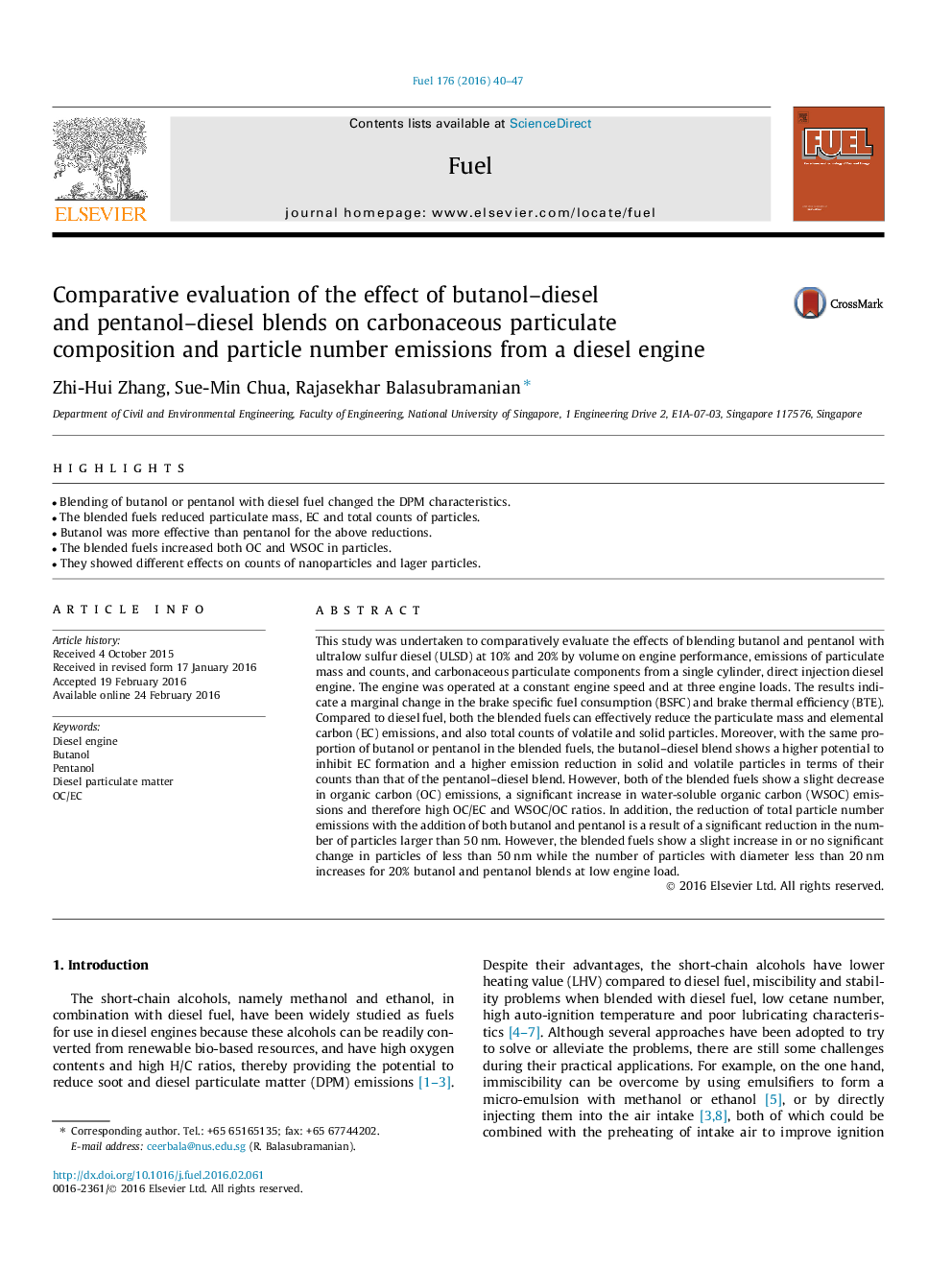| کد مقاله | کد نشریه | سال انتشار | مقاله انگلیسی | نسخه تمام متن |
|---|---|---|---|---|
| 205155 | 461099 | 2016 | 8 صفحه PDF | دانلود رایگان |
• Blending of butanol or pentanol with diesel fuel changed the DPM characteristics.
• The blended fuels reduced particulate mass, EC and total counts of particles.
• Butanol was more effective than pentanol for the above reductions.
• The blended fuels increased both OC and WSOC in particles.
• They showed different effects on counts of nanoparticles and lager particles.
This study was undertaken to comparatively evaluate the effects of blending butanol and pentanol with ultralow sulfur diesel (ULSD) at 10% and 20% by volume on engine performance, emissions of particulate mass and counts, and carbonaceous particulate components from a single cylinder, direct injection diesel engine. The engine was operated at a constant engine speed and at three engine loads. The results indicate a marginal change in the brake specific fuel consumption (BSFC) and brake thermal efficiency (BTE). Compared to diesel fuel, both the blended fuels can effectively reduce the particulate mass and elemental carbon (EC) emissions, and also total counts of volatile and solid particles. Moreover, with the same proportion of butanol or pentanol in the blended fuels, the butanol–diesel blend shows a higher potential to inhibit EC formation and a higher emission reduction in solid and volatile particles in terms of their counts than that of the pentanol–diesel blend. However, both of the blended fuels show a slight decrease in organic carbon (OC) emissions, a significant increase in water-soluble organic carbon (WSOC) emissions and therefore high OC/EC and WSOC/OC ratios. In addition, the reduction of total particle number emissions with the addition of both butanol and pentanol is a result of a significant reduction in the number of particles larger than 50 nm. However, the blended fuels show a slight increase in or no significant change in particles of less than 50 nm while the number of particles with diameter less than 20 nm increases for 20% butanol and pentanol blends at low engine load.
Journal: Fuel - Volume 176, 15 July 2016, Pages 40–47
